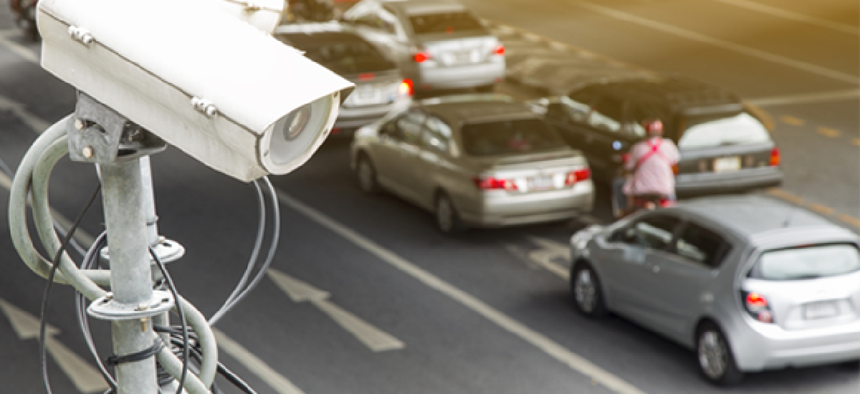How technology can help local police improve efficiencies and better serve citizens


Connecting state and local government leaders
Tools like automated license plate recognition software and vehicle recognition systems can be used to create a contactless and efficient form of policing that can help departments manage their budgetary realities while keeping their officers and communities safe for everyone.
In cities across America, calls to defund the police are adding to the challenges that many law enforcement agencies are already facing due to slashed budgets and limited numbers of officers. Now more than ever, it’s time for municipalities and local police departments to begin considering ways to make policing more efficient.
The right technology can aid local police departments as they address these evolving challenges. Tools like automated license plate recognition (ALPR) software and vehicle recognition systems can be used to create a contactless and efficient form of policing that can help departments manage their budgetary realities while keeping their officers and communities safe for everyone.
Searching for vehicles, not people
Vehicle recognition technology uses strategically placed cameras to read license plate numbers and detect vehicle makes, models, colors and other attributes. When the system receives a hit -- for instance, a plate number that appears on a department’s “hot list” of vehicles that have been reported stolen or involved in a crime -- an officer can be dispatched to approach the vehicle when it stops, minimizing the need for a high-speed chase or potentially dangerous confrontation. Because the technology focuses on the vehicle, it eliminates the potential for “profiling” by race, gender, age, religion or personal political leanings. It simply provides officers with an investigative lead tied to a vehicle of interest and the ability to move more effectively to the next stage of an investigation.
For example, one of our clients described an incident where a woman was assaulted by a driver and left by the side of the road. The victim called in a report and provided the authorities with a description of the vehicle. Officers entered the description and license plate number into the department’s vehicle recognition system, which quickly flagged the vehicle after existing cameras showed it had stopped at a local fast food restaurant. Officers were dispatched to the scene and apprehended the suspect without incident.
Financial and data privacy impacts
This capability also can be a huge boon to departments’ bottom lines. Police departments rely on state and local funding, but the recent COVID-19 pandemic has resulted in deep budget cuts that in many areas have led to a reduction in the number of officers on patrol. Defunding local police or moving funds to community programs will further restrict the amount of money that departments have at their disposal. Implementing software that leverages existing cameras and infrastructure, while allowing officers to take a more efficient approach to suspect apprehensions, can help departments continue to be effective even in light of budget cuts.
Part of being good defenders of the community involves protecting citizens’ privacy rights. Police departments looking at these types of solutions must carefully examine their own data sharing and privacy policies, as well as those of their states and the vendors and agencies they’re considering as partners.
Any vehicle recognition data collected by law enforcement agencies is their data: they own it and should manage it in a way that conforms to agency policies and any governing laws. According to the 1994 Driver’s Privacy Protection Act, it is only under a defined permissible purpose that a law enforcement officer can “link” a vehicle to an individual using systems and databases outside of their ALPR system. This provision protects citizens’ privacy rights and furthers safeguards to state law and agency policy to help ensure that vehicle recognition data is leveraged by law enforcement in a safe and responsible manner.
Agencies should also review their data retention period as set by state law or agency policies. In one state, the law allows a 90-day data retention policy, but a local organization opted to keep ALPR data for only 30 days.
Data should be shared with other local government departments by the agency that is collecting the data as deemed appropriate and in furtherance of the public safety mission. A local police department, for example, may elect to share data with another jurisdiction as part of a joint operation.
Building bridges
While citizens sometimes express concerns when vehicle recognition systems are first implemented, they often become huge supporters of the program when the department communicates and publicizes the success of the system in apprehending suspects and solving crimes.
Clear communication and transparency about their vehicle recognition programs and policies can assure citizens that the mission is to keep officers and communities safe, while protecting citizens’ privacy rights.
Local police departments are dealing with enough right now. They need solutions to help them manage the challenges they’re facing while building bridges to their communities. The right technologies can help departments take strides to manage tightening budgets while continuing to honor their pledge to “serve and protect.”




